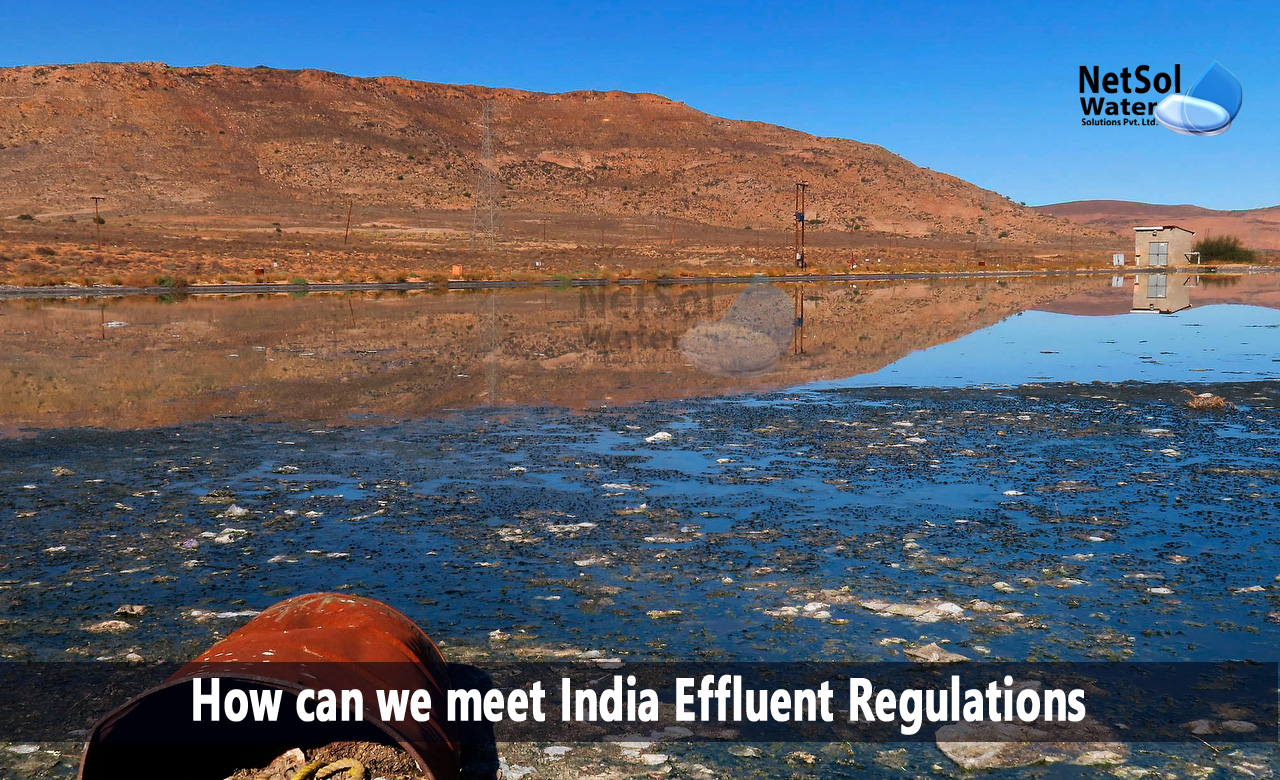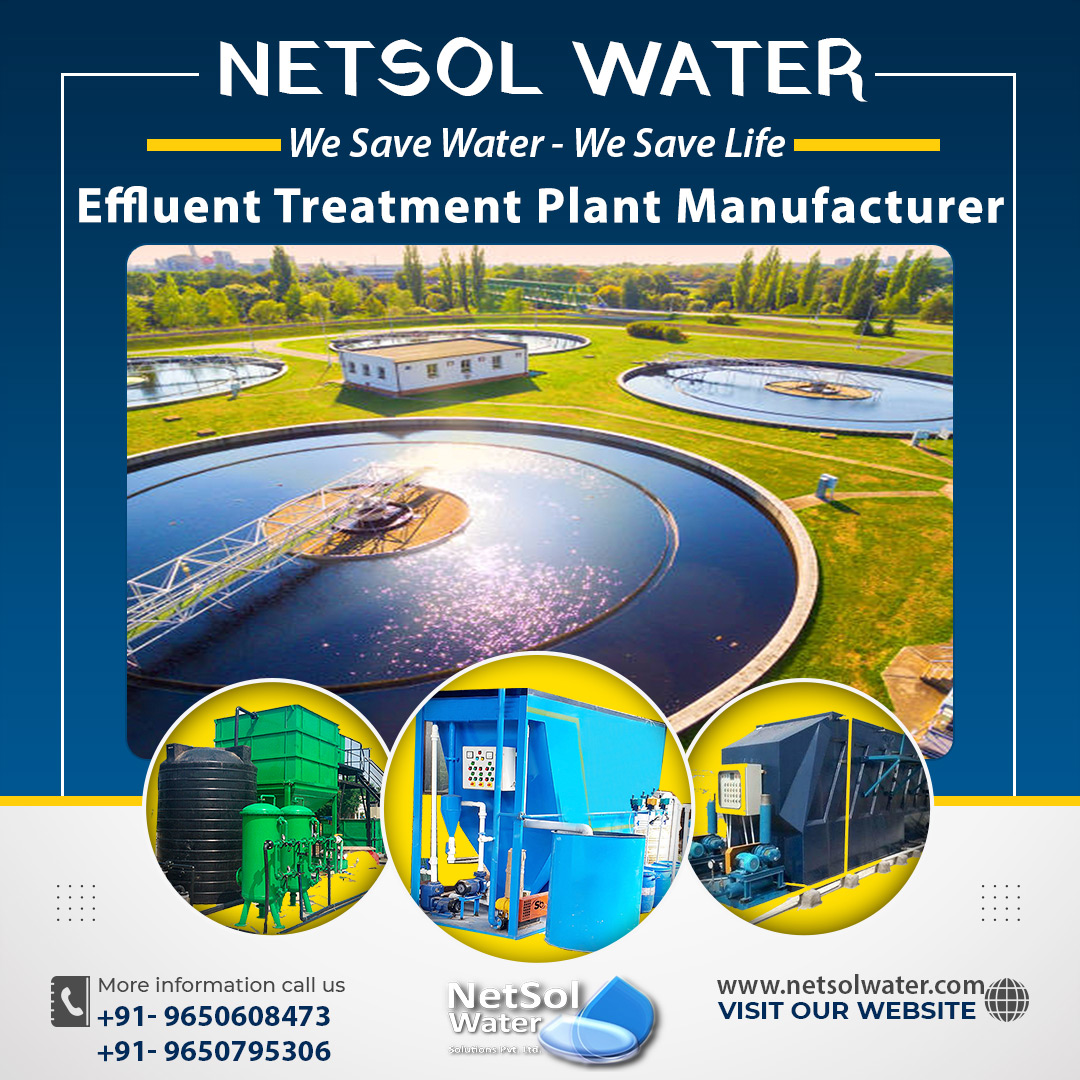It's critical to understand how wastewater treatment affects your overall safety. Whether you own, operate, or manage municipal or industrial wastewater facilities, adhering to effluent standards and regulations is important.
The Pollution Control Board warns that failure to understand this step, in the effluent treatment process could result in fines or legal action.Depending on where your facility is located and what industry it serves, different rules will apply.
How can we meet India effluent regulations?
Let's talk about the difficu?lties and strategies for enforcing industry effluent rules.
· Your effluent's biochemical oxygen demand is high
The quantity of dissolved oxygen that aerobic biological organisms need to break down organic matter, into smaller molecules is known as the biochemical oxygen demand (BOD). WWTPs/ETPs are required to limit BOD discharge at a value of 30 mg/l.
As these levels rise, they reduce the amount of oxygen that other aquatic species need, which promotes the growth of algae and harms the marine environment where wastewater is dumped.Because of this, many effluent rules place limits on these volumes, safeguarding the safety of nearby rivers.
· The amount of dissolved and suspended particles in your effluent is excessive
The Pollution Control Board establishes your protocols, and the extent to which you implement the effluent restrictions. It may differ based on the total dissolved solids (TDS) and total suspended solids (TSS) concentrations, in the effluent from your facility.
TSS:A total suspended solid is the dry weight of suspended particles that can be captured by a filter, but are not dissolved in water. It can harm marine creatures when it is present in wastewater in excessive concentrations. It can lower oxygen levels and kill insects in aquatic habitats. 100 mg/l is the recommended concentration to adhere to the total suspended solids restrictions, specified by discharge laws.
TDS:The inorganic salts and trace amounts of organic materials in water are referred to as TDS. The main components are typically carbonate, hydrogen carbonate, chloride, sulphate, and nitrate anions, as well as calcium, magnesium, sodium, and potassium cations and anions.They have the potential to affect groundwater, crops, irrigation, and aquatic life.
Treatments for removing TDS and TSS
Some of the treatments that can aid in lowering the TSS and TDS levels, in your wastewater include the following:
Coagulation
In order to remove all tiny particles from water by integrating them into heavier settling particles, this process starts with a variety of mixing reactors, typically one or two reactors, adding various chemicals.
The most widely used coagulants are those made of aluminium, such as Polyaluminum chloride and alum. The particles may also be coagulated with a slight pH change.We offer devices for chemically dosing these coagulants in water.
Flocculation
Following the coagulation phase comes, flocculation. The coagulated particles are progressively mixed with long-chain polymers in the flocculation chamber to form clear, settleable snowflakes.We do offer flocculation tanks with mounted slow-speed agitators.
Sedimentation
Different forms of filtration are available depending on the quantity and type of suspended particles. One is a Lamella Clarifier, a type of clarifier with plates that are slanted at an angle and is quite popular. We can produce very high-quality filtrate at rising rate velocities, between 1.4 and 1.8 m/hr.
After dewatering, some of the bottom-collected sludge can be recycled back into the flocculation tank, and some of it is disposed of.We also offer a High Rate Solid Contact Clarifier that serves, the twin functions of removing suspended solids and precipitating hardness and silica salts, with the addition of lime, soda ash, and dolomite.
The sludge, which may contain both suspended solids and salts that have precipitated, can be dewatered and subsequently disposed of through solid waste treatment, if the filtrate quality is less than 25 ppm.
Carbon or sand filtration
To obtain filtrate quality of 5ppm, multi-grade sand filters or FRP containers are filled with several sand grades. Once a day, a backwash is performed for 15-20 minutes to remove all suspended materials, trapped in the medium.
Similar to a water filter, a carbon filter is an MS/FRP vessel filled with carbon that can have the required amount of iodine, to produce water that is chlorine-free, colourless, and odourless.
Reverse Osmosis
To concentrate the final refuse with the least amount of TDS, a combination of Ultrafiltration and 2 or 3 stages of Reverse Osmosis may be required.
After passing through a centrifuge, drier, and evaporator to produce solids, this final reject is then disposed of through solid waste management.
· Your effluent has a higher proportion of nitrates and phosphates
High levels of nitrates or phosphates in wastewater that are discharged into nearby areas, can raise BOD, and significantly increase the growth of weeds, algae, and phytoplankton.
Eutrophication, or the de-oxygenation of a body of water, can arise from this. Eutrophication can kill bacteria and eventually cause hypoxia or natural dead zones. Detergents, chemicals, and human and food waste are a few other examples, of how they can enter the drainage system.
Limits on these substances are typically strictly enforced for these reasons. The maximum concentrations of nitrogen and phosphorus that can be released into the environment, are 10 mg/l and 5 mg/l, respectively.
Treatment for removing nitrates and sulphates
Ion exchange, reverse osmosis, conventional biological treatment, and denitrification, are just a few of the procedures that can be used to remove nitrates from a solution.
Prior to aeration for the denitrification process, we supply recirculation in anoxic tanks.Typically, wastewater treatment involves a mix of technologies. Depending on the quality of the input wastewater, we offer the right solution.
Depending on the kinds of phosphates present, coagulation or chemical precipitation is the suitable method, for removing phosphates from wastewater.Aeration tanks that inject oxygen to promote biological floc development, and Up-flow Anaerobic Sludge Blanket Reactors that break down organic waste into methane and carbon dioxide, are two examples of biological treatments that can be effective.
· Your effluent contains oil and grease
High concentrations of oil and grease in wastewater will block sewage and drainage pipes, in addition to harming human health and destroying marine animals.It is strictly forbidden to discharge these contaminants along with effluent, which are frequently released into wastewaters as by-products of the food processing industry.
Treatment for removing oil and grease
The maximum concentration of oil and grease discharge is 10 mg/l.Dissolved air flotation (DAF) is used by facilities that deal with a lot of oil and grease to treat their effluent.
A method of wastewater treatment called dissolved air flotation clarifies wastewater, by removing suspended particles like oil or sediments. The removal is carried out by dissolving air under pressure in water or wastewater, and releasing it at atmospheric pressure in a flotation tank basin.
Some filtration techniques, such as ultrafiltration and activated charcoal, can also be employed to successfully remove oil residues.Additionally, we also offer oil and grease separators, which are used to remove grease and free-floating oils, respectively.
· Your effluent contains a lot of heavy metals, including copper, zinc, and chromium
Since, the latter half of the twentieth century, there has been an increase in concern regarding the varied consequences of heavy metals, on people and marine habitats.
Metal production emissions have dropped recently in many nations as a result of rigorous effluent restrictions, enhanced cleaning and purification technologies, and modified industrial practises.
Treatments for heavy metal removal
Conventional treatment methods include chemical precipitation, ion exchange, and electrochemical removal can remove heavy metals from inorganic effluent.
Due to its simplicity of usage, membrane separation has recently been used more and more for the treatment of inorganic wastewater. We offer a variety of membrane filtering processes, including reverse osmosis, and ultrafiltration.
How can Netsol Water assist?
Netsol has provided specialized water and wastewater system design,and installation services to various industries. We can help you build the optimal solution at a reasonable cost, by walking you through each stage.
At Netsol, we not only assist you in choosing the best water and wastewater treatment system for your needs, but also provide routine maintenance. If you have any questions regarding our services, please don't hesitate to contact our design head or send us an email.




